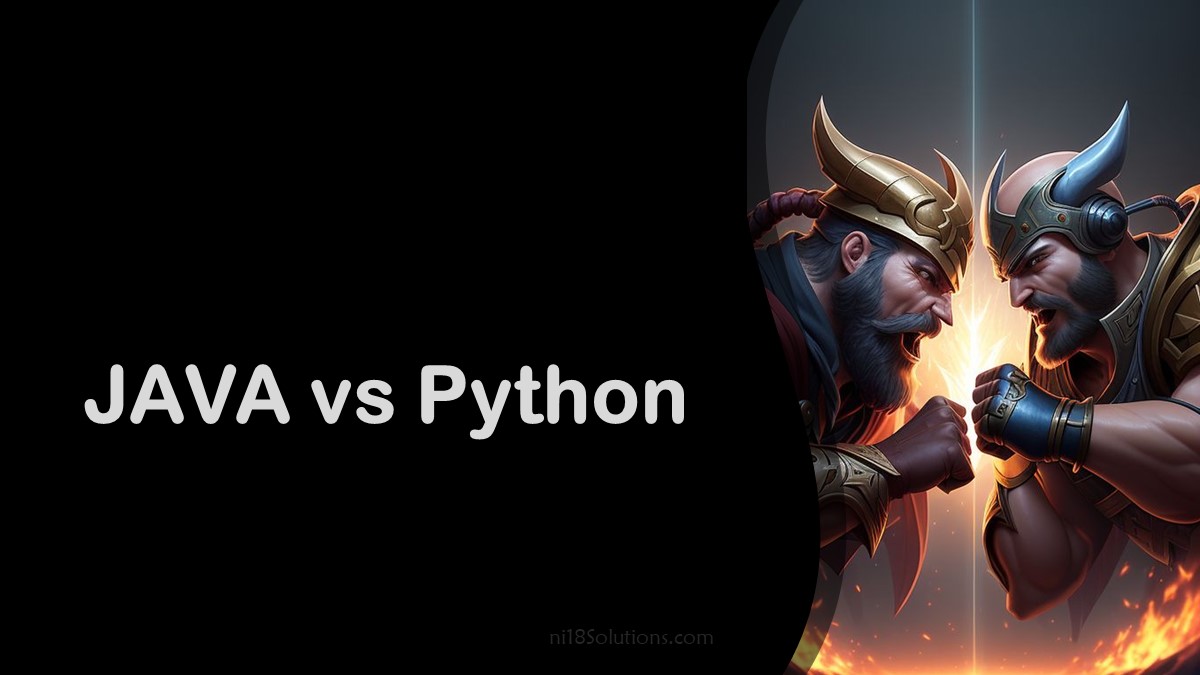Hello there, coders! Today, we’re going to talk about two very popular programming languages: Java and Python. We’ll compare them, look at their strengths and weaknesses, and try to figure out which one might be the best fit for you. Let’s dive in!
Table of Contents
Introduction
Java and Python are both powerful programming languages used by coders all around the world. They’re used in everything from web development to data science, and learning either (or both!) can open up a lot of opportunities.
What is Java?
Java is a high-level, class-based, object-oriented programming language. It was designed to have as few implementation dependencies as possible, which means that compiled Java code can run on all platforms without needing to be recompiled. Java is used in a wide variety of computing platforms, from embedded devices and mobile phones to enterprise servers and supercomputers.
What is Python?
Python is an interpreted, high-level, general-purpose programming language. It emphasizes code readability, and its syntax allows programmers to express concepts in fewer lines of code than might be possible in languages such as C++ or Java. Python provides constructs that enable clear programming on both small and large scales.
Comparing Java and Python
Syntax
One of the biggest differences between Java and Python is the syntax. Java’s syntax is more complex and strict, which can make it harder for beginners to learn. Python, on the other hand, is known for its clean and easy-to-understand syntax. It’s often said that Python code is almost like reading English!
Speed
When it comes to speed, Java generally runs faster than Python. Java is a compiled language, which means it translates the code into machine language before running it. Python, being an interpreted language, reads and executes code line by line, which can make it slower.
Practicality
Python is often praised for its practicality. It comes with a large standard library that supports many common programming tasks, such as connecting to web servers, reading and modifying files, and more. Java can do all these things too, but it usually requires more lines of code to accomplish the same tasks.
Community and Support
Both Java and Python have large, active communities. This means that if you’re stuck on a problem, there’s a good chance someone else has encountered it before and a solution is just a quick web search away. Both languages also have a lot of third-party libraries, which can help you do more with less code.
| Feature | Java | Python |
|---|---|---|
| Syntax | Verbose syntax requiring explicit typing | Concise syntax with dynamic typing |
| Performance | Generally faster execution speed | Slower execution speed for some tasks |
| Community Support | Strong community support and extensive libraries | Large community with rich ecosystem |
| Learning Curve | Steeper learning curve for beginners | Gentle learning curve, great for beginners |
| Platform | Cross-platform | Cross-platform |
| Typing | Statically typed | Dynamically typed |
| Concurrency | Built-in support for multi-threading and concurrency | Support for multi-threading but less robust |
| Development Speed | Slower due to verbosity | Faster due to concise syntax |
| Popularity | Widely used in enterprise and large-scale applications | Popular for web development, data science, and scripting |
| Use Cases | Enterprise applications, Android app development | Web development, scripting, data analysis |
So, Which is Better?
The answer to this question really depends on what you want to do. If you’re interested in web development or working on large systems, Java might be the way to go. If you’re interested in data science or want to start coding with a language that’s easy to learn, Python might be your best bet.
Remember, there’s no “best” programming language. The best language is the one that helps you accomplish your goals. So whether you choose Java, Python, or some other language entirely, the most important thing is to keep learning and experimenting. Happy coding!
